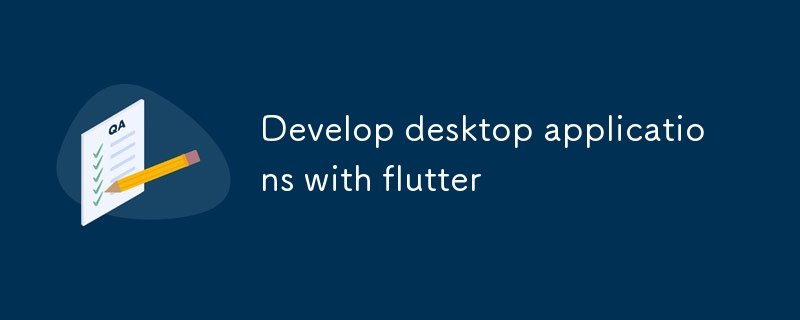Develop desktop applications with flutter
This article explores the differences between developing desktop applications with Flutter and other frameworks. It covers the unique considerations, including UI complexity, performance optimization, and distribution for Flutter desktop applications

Key Considerations When Building a Flutter Desktop Application
Flutter desktop applications share many similarities with mobile and web applications, but there are also some key differences to consider:
- User Interface (UI): Desktop applications typically have a more complex UI than mobile or web applications due to the larger screen size and the use of more traditional input devices, such as keyboards and mice. As such, it is important to consider the layout, navigation, and responsiveness of your UI when designing a desktop application.
- Performance: Desktop applications often require more performance than mobile or web applications due to the more intensive tasks that they may need to perform. As such, it is important to optimize your code and use efficient algorithms to ensure that your application runs smoothly.
- Distribution: Desktop applications need to be distributed in a different way than mobile or web applications. You will need to create an installer for your application and provide instructions on how to install it on a user's computer.
How Does Flutter Compare to Other Frameworks for Desktop Development?
Flutter is a relatively new framework for desktop development, but it is quickly gaining popularity due to its many advantages. Some of the benefits of using Flutter for desktop development include:
- Cross-platform support: Flutter is a cross-platform framework, which means that you can develop a single codebase for your application that will run on both Windows, macOS, and Linux.
- Fast development: Flutter uses a hot reload feature that allows you to see changes to your code reflected in your application in real time. This can significantly speed up the development process.
- Native performance: Flutter applications compile to native code, which means that they can achieve comparable performance to native applications.
Best Practices for Designing and Deploying Flutter Desktop Applications
When designing and deploying Flutter desktop applications, it is important to follow a few best practices:
- Use a modern IDE: Flutter is supported by a number of modern IDEs, such as Visual Studio Code, IntelliJ IDEA, and Android Studio. Using an IDE can help you to improve your productivity and avoid errors.
- Follow the Flutter style guide: The Flutter style guide provides a set of guidelines for designing and coding Flutter applications. By following the style guide, you can make your applications more consistent and easier to read.
- Test your application: It is important to test your application thoroughly before deploying it to users. This will help you to identify and fix any bugs that could affect the stability or performance of your application.
The above is the detailed content of Develop desktop applications with flutter. For more information, please follow other related articles on the PHP Chinese website!

Hot AI Tools

Undresser.AI Undress
AI-powered app for creating realistic nude photos

AI Clothes Remover
Online AI tool for removing clothes from photos.

Undress AI Tool
Undress images for free

Clothoff.io
AI clothes remover

AI Hentai Generator
Generate AI Hentai for free.

Hot Article

Hot Tools

Notepad++7.3.1
Easy-to-use and free code editor

SublimeText3 Chinese version
Chinese version, very easy to use

Zend Studio 13.0.1
Powerful PHP integrated development environment

Dreamweaver CS6
Visual web development tools

SublimeText3 Mac version
God-level code editing software (SublimeText3)

Hot Topics
 1377
1377
 52
52


